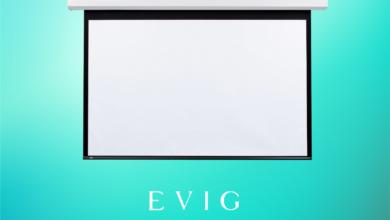Clicks & Connections: The Best Digital Tools to Boost Your Networking Game

Networking has gone digital — and fast. While handshakes and happy hours still matter, much of today’s professional relationship-building happens online, often before a single Zoom call is booked. Whether you’re an entrepreneur, freelancer, or job seeker, using the right digital tools can help you connect more strategically, follow up faster, and leave a stronger impression.
From smart contact management to personal branding, here are some powerful tools — plus a targeted FAQ — to help you network smarter, not harder.
1. LinkedIn: More Than Just a Resume
Yes, LinkedIn is the obvious go-to — but most people still underuse it. Beyond job listings, LinkedIn offers powerful networking features like personalized connection requests, recommendations, and skill endorsements. Publishing short posts, sharing industry articles, and commenting on others’ content can raise your visibility significantly. One smart tip: send a voice message via the LinkedIn mobile app after connecting — it stands out and builds a more personal rapport. Also explore LinkedIn’s “Creator Mode” for boosting your content reach and attracting inbound connections.
2. Lunchclub: AI-Powered Intros to People You Should Know
Lunchclub takes the cold out of cold networking. This platform uses AI to match professionals for 1:1 video calls based on shared interests, industries, and goals. It’s ideal for expanding your network beyond your city or company, and great for discovering unexpected collaborators or mentors. You’ll receive weekly matches, and all it takes is 30 minutes to have a quality conversation with someone new. Best part? It’s free — and feels more human than most networking platforms.
3. Clay: Relationship Intelligence for Busy Professionals
Clay is a smart contact management system that syncs with your email, calendar, LinkedIn, and even Twitter to help you remember the who, when, and why of your connections. It reminds you to follow up, tracks your interactions, and even pulls relevant info like birthdays, job changes, or recent tweets. For professionals juggling dozens (or hundreds) of contacts, Clay keeps things personal without relying on memory alone. Think of it as a modern-day digital Rolodex — but with brains.
4. Shapr: Swipe, Match, Connect
Think of Shapr as the Tinder of professional networking. You swipe through curated profiles, match with people who share mutual interests or goals, and then chat to set up a coffee or call. Shapr uses your interests and goals (e.g., “looking for a co-founder” or “exploring new roles”) to personalize suggestions. It’s especially useful for early-stage professionals or entrepreneurs seeking peers in similar trenches. It also helps reframe networking as a casual, daily habit rather than a high-pressure event.
5. Adobe Express: Design Branded Content That Connects
Personal branding is core to online networking, and Adobe Express makes it easy to design standout social headers, personalized thank-you graphics, and yes — even custom business cards. Whether you’re creating a graphic to accompany a LinkedIn post or designing an event follow-up email header, Adobe Express offers a library of templates and brand-friendly tools. A consistent visual identity across your outreach materials increases your memorability — and trust factor.
See also: Corporate Phone 6476974024 Customer Service
6. QR Code Generator: Bridge the Offline and Online
Attending a networking event or conference? Don’t just rely on business cards — link your professional presence with a QR code. Tools like QRCode Monkey or QR Tiger let you generate custom codes that point to your LinkedIn, portfolio, scheduling app, or contact form. Add the code to your digital signature, slide deck, or printed materials. It’s a fast, contactless way to drive traffic to your best content and reduce friction when someone wants to follow up.
🤝 FAQ: Smart Tips for Designing Better Business Cards
Even in a digital world, business cards still have value — especially when designed thoughtfully. They’re your portable pitch, your brand in someone’s pocket. Here’s what professionals often ask when building cards that connect.
Q1: What should I include on a modern business card?
Stick to essentials: name, title, email, phone, and your most active professional link (usually LinkedIn or a portfolio site). Optional but useful additions include a photo, QR code, or a short tagline that communicates what you do or offer. Clean design beats clutter every time.
Q2: What are the best platforms to design cards without a graphic designer?
Adobe Express, Vistaprint, and Moo all offer easy-to-use design platforms. Adobe Express is especially intuitive for creating unique layouts with drag-and-drop functionality and high-quality templates. You can design directly for print, ensuring your card looks professional from screen to paper.
Q3: Where can I go to print professional business cards online?
For quality and speed, Vistaprint and Moo are top choices. Moo is known for luxury finishes and thicker stock, while Vistaprint balances affordability with lots of customization. If you’re designing your own layout and want to see it printed exactly as shown, check this out for a design-to-print workflow using Adobe Express.
Q4: How do I make sure my card aligns with my personal brand?
Choose a color scheme, font, and visual style that match your online presence — including your LinkedIn banner, website, or email signature. Repeating visual elements across touchpoints builds brand recognition. If you’re using a logo or professional headshot, ensure they’re high-res and print-ready.
Q5: Are there any business card tools that use AI or smart suggestions?
Yes. Adobe Express and Moo both incorporate intelligent design suggestions based on the template and content you input. These tools help you balance layout, spacing, and readability — even if you’re not a designer.
Networking today means showing up — online, in-person, and in inboxes — with clarity and intention. These tools help you not just meet people, but connect with them. From AI-powered introductions to custom business cards that spark follow-up, your networking toolkit can do a lot of heavy lifting behind the scenes. All you have to do is show up and keep the conversation going.




